Media | Articles
Letting your classic car sit is a recipe for disaster. I got lucky.
If you delve into the comment section on an episode of Tom Cotter’s Barn Find Hunter series on Hagerty’s YouTube channel, you’ll find that some enthusiasts view the dusty, moldering expanses of Mopars and Mercurys less as an exciting archeological survey of unearthed automotive riches and more as a cautionary tale: Drive and enjoy your cars, lest they rot.
A noble sentiment. But not all enthusiasts are privy to space, storage, cash, a reliable shop, or a combination of all these factors. Some cars are one big bill away from being parked for decades. Or, maybe not so big—life has a way of pouring coolant in our oil from time to time.
Ask me how I know. Or maybe ask my 2002 Porsche 996 Carrera that, until two weeks ago, was an inoperable and very dirty albatross around my neck.
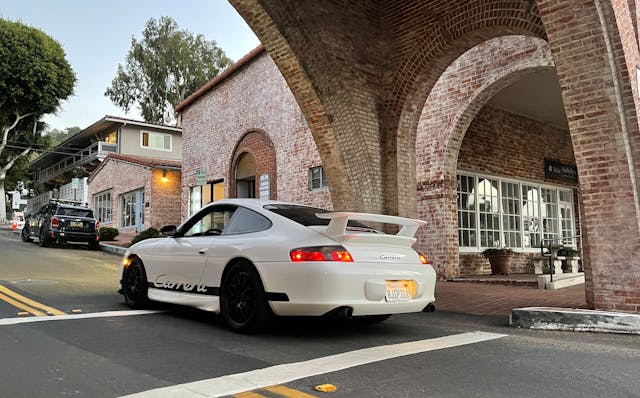
The more a car sits, the more the problems, bills, and guilt compound. Prior to its recent resuscitation, I fed and nurtured an unbreakable loop of “I’ll get around to it when [X].” The variable input here is a rotation of [more money], [time], and/or [not lazy]. It sat for a little more than a full year before I decided to solve for [X].
Even six months in, I was sure I was screwed. I knew—I knew—the car would exit its dusty carport with rodent-gnawed wiring, congealed oil, locked brakes, varnished fuel, and a moldy interior. It wasn’t until over a full year in when I got a grim telehealth prognosis that lit a fire under my ass.
Marketplace
Buy and sell classics with confidence
“What’s the worst thing you can do to a 996?”
I already knew the answer, but I had to ask. I’m a supplicant to my neuroses, and there was no way, no how I would finish my visit earlier this year to Flat Six Innovations without inducing a low-grade anxiety spiral. Jake Raby’s rural Georgia workshop is sanctum sanctorum for anyone emotionally involved with a Porsche 996, with Raby himself as the ultra-maestro behind what are inarguably the best M96 and M97 engine builds this side of Neptune. On the subject of 911 engines, his word is gospel.
“The worst thing you can do to a 996 is let it sit,” Raby said bluntly.
2300 miles away, my 996 sat. “What year is your car?” Raby asked after I fessed to this neglect. I told him it was a 2002 Carrera.
“3.6? Ah, so that’s the worst one too, at least from a mechanical standpoint,” he explained, as my life expectancy visibly wicked away. “Those engines have the highest amount of fail points than any other variant of M96.”
My gut felt as though I swallowed a brake caliper.
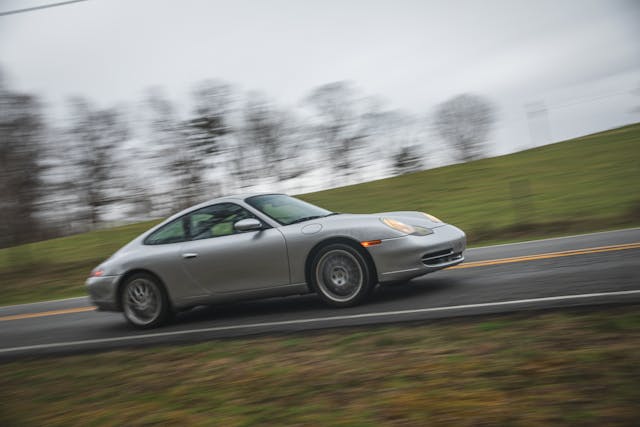
It’s not like I planned on mothballing the 996 for so long. Heck, I parked the Carrera sometime in late 2020—maybe early 2021—as a healthy, running car. There were a few things on my checklist to fix, all non-critical. The fluids were fresh, the notorious IMS bearing was recently sorted, and the tires new. It ran and roared with alacrity unbecoming of its six-fig odo readout and its unshakable reputation as an intricately engineered, German hand-grenade.
Much of the motivation behind this hibernation arrived as a side-effect of my career. My previous post was at an in-market car magazine, cycling me through a ceaseless fleet of press cars that ranged from the basest Corolla to the latest ballistic from McLaren. It’s far, far easier to navigate the broken and brutal roadways of Los Angeles in something soft and boring than sharp and thrilling, so mundane commutes were dispatched in a CR-V or BMW X7 or Acura MDX or whatever.
The 996 sat.
Supercars, Hellcats, M3s, and plenty of Porsches filled the gaps in my schedule like a light dusting of meth. Why futz with the 996 when I could subjugate canyons in a better, fresher 911? Anyways, I was gone on work trips for at least five days a month and when I got back, I just wanted to chill.
The 996 sat.
Here’s where I shift some blame unto the car itself. As is the case with most early 2000s German cars—or German cars of any vintage, really—the name of the game is excessive engineering and complication for the sake of complication.
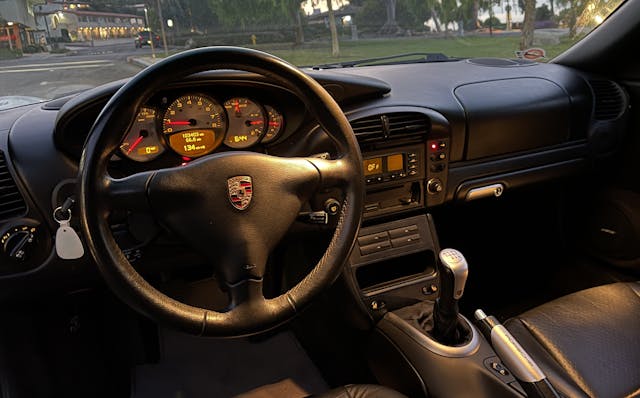
Consider the location of my car’s battery. Porsche slotted it against the front firewall and just above the front trunk storage space. In the transition from the 996.1 (1999–2001) to the 996.2 (2002–2004), some genius decided the 996.1’s cable-operated frunk release lever to be too rustic, too agricultural. No, it’s most logical to lock the 996.2’s battery behind an electric frunk switch on the interior.
If your battery gets too low, you cannot pop the frunk lid to access said dead battery with the interior switch. Naturally, Porsche engineered an analog failsafe for just this occasion in the form of a braided-steel frunk release cable—only, it’s located in the passenger-side front wheel-well, behind the liner, and is usually only accessible if you remove a wheel and reach in with a coat hanger hook. German engineering!
Prior to the long sleep, I kept track of how long it had been since my last weekend drive and removed the almost-dead battery before it crossed the threshold of not being able to pop the frunk. With no outlets available in the parking area, I’d charge the battery inside my apartment before reinstalling it for a short drive.
Then, a long holiday in Texas killed it dead. The 996 sat.
I dreaded the resurrection ritual ahead of me. The battery was old, and way beyond jumping—an arcane and very sketchy process on the 996 that involves a tiny retractable jump post in the driver’s footwell—so a tow was required. Its tomb née carport is in an alarmingly narrow alleyway that runs alongside the apartment building, so getting a towtruck larger than one based on a standard HD chassis is impossible. Oh, and the building is constructed into the side of a slope, so the entrance ramp is far too steep to push the dead car up with only manpower.

This reckoning arrived after a year and a half, when I finally decided to take the first step in heeding Raby’s advice. The first tow truck from Hagerty Roadside Assistance couldn’t fit. The second truck made it down with only a picometer of clearance but skedaddled when I sheepishly admitted I didn’t have the screw-in tow loop that slots in the front bumper. It was either find a tow hook or risk ripping off the front bumper.
I sourced the requisite tow loop from the appointed shop. Not wanting to play tow-truck roulette, I called a few companies and shopped around my predicament. $250 got my car expertly extracted from its cavern and delivered for its health check.
This was the first time this specialty Porsche/BMW workshop had seen and serviced my car, and I gave them plenty heads-up on what to expect. I pre-approved a new battery, a full fluid change, and a fuel tank flush, alongside a paid walkthrough inspection with a master tech to see what’s gone to hell as a result of my neglect and what might need replacing in the future.
The tech gave it to me straight. The oil was … clean? The brake fluid had some water in it but that wasn’t a problem. Are you sure? He was. It was time to swap transmission fluid but the old stuff came out without shavings or glitter. I told him to check again.
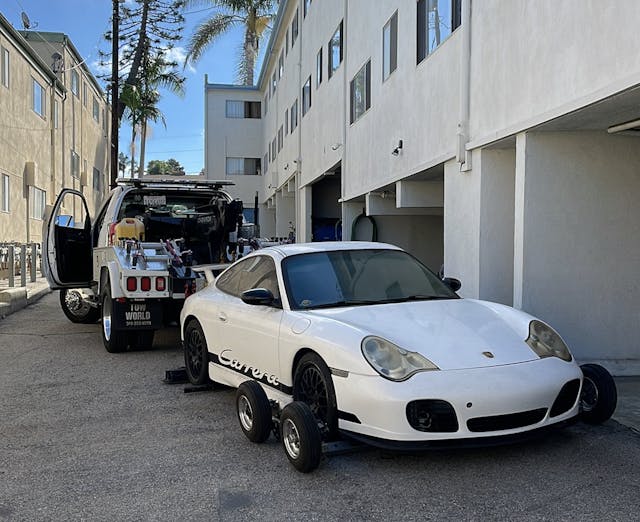
It just got better and better. If you haven’t gleaned from this treatise or my prior dissertation on the wonders and woes of owning a fun car in L.A., I’m nuts. I’m obsessed with classic cars, but driving them in L.A. traffic and around our awful infrastructure makes my teeth fall out from maintenance anxiety. I need to chase problems on an old(er) Porsche like I need a case of the mumps.
So, when the tech said, “I can’t imagine ever finding a mechanically cleaner 996 with this mileage,” my knees almost buckled. I bought this car from a dear friend who maintained it to an exacting degree, but I expected my 5000 miles of driving and a year in the shadows to have unraveled all his good work.
I’ve put 78 miles on the 996 since it came back from the shop two weeks ago. It runs great. It runs like it was never parked in the first place. There are no electrical issues, no sagging body panels, no rust, no leaks. No smoke on startup, and no suspect sounds. The overrev counter was unremarkable, the camshaft deviation is essentially nil. My god, I lucked out.

Never again. You hear me? Never. Again. With less travel and other cars distracting me, this wonderful car is going to see substantially more seat time than it did before. There are things I’d like to fix, including the old wrap—long story—and shifting the aesthetics from faux-GT3 to that of a 996 GTS from an alternate timeline. But that can wait.
Maybe this is your notice to yank off that car cover. Drop your ride down from those jackstands, and take it off the tender. There’s very little that can’t be fixed, and you never know—it could be a whole lot less catastrophic than you expected.
Check out the Hagerty Media homepage so you don’t miss a single story, or better yet, bookmark it.
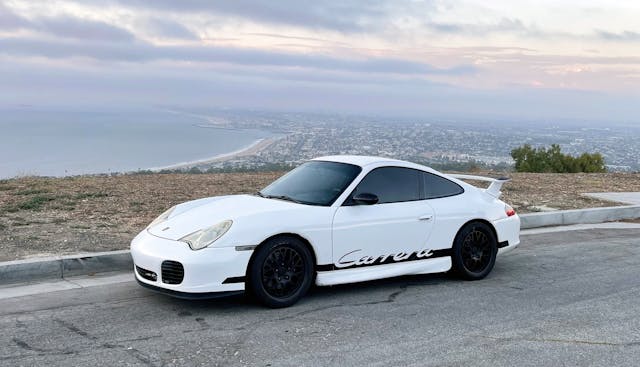

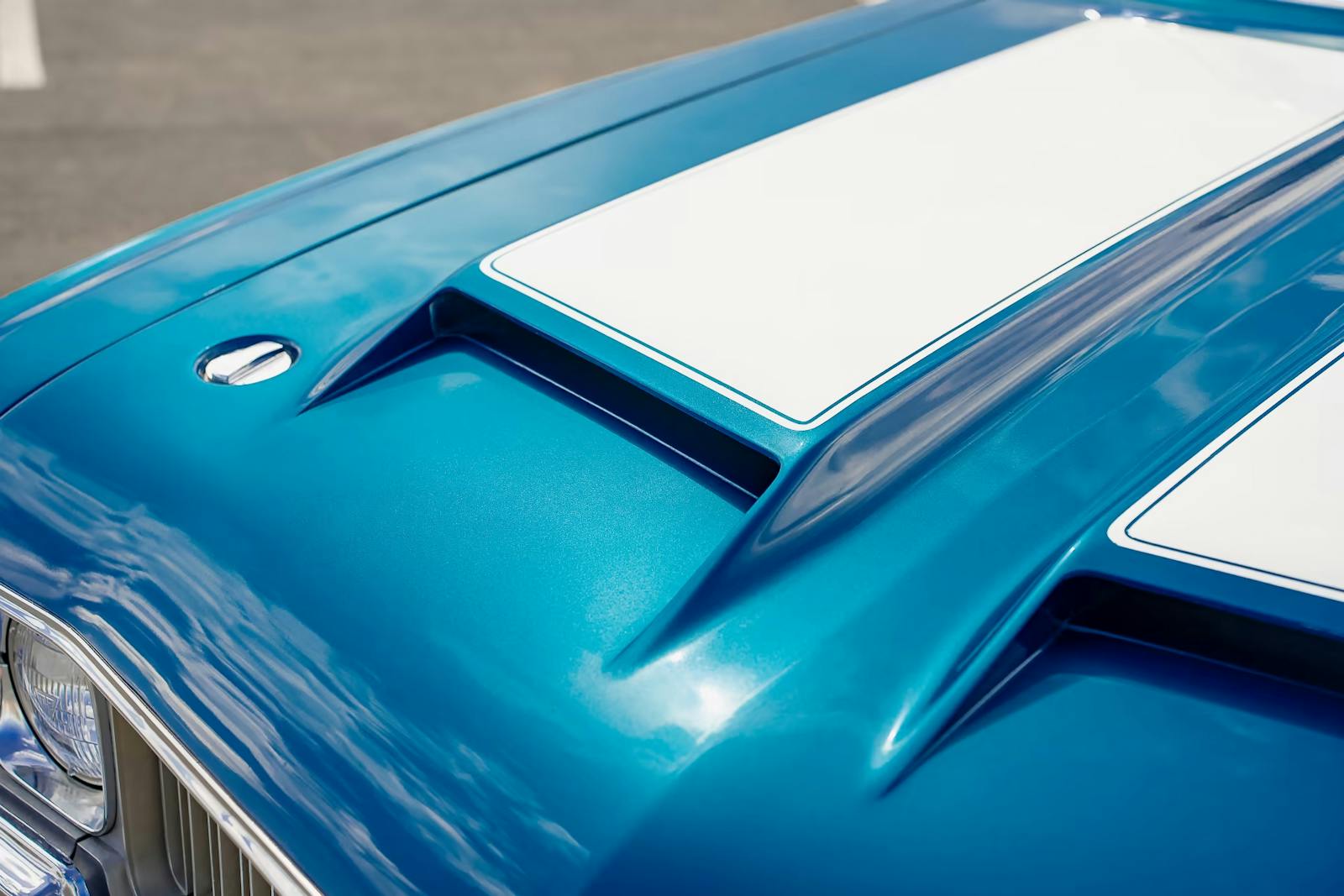



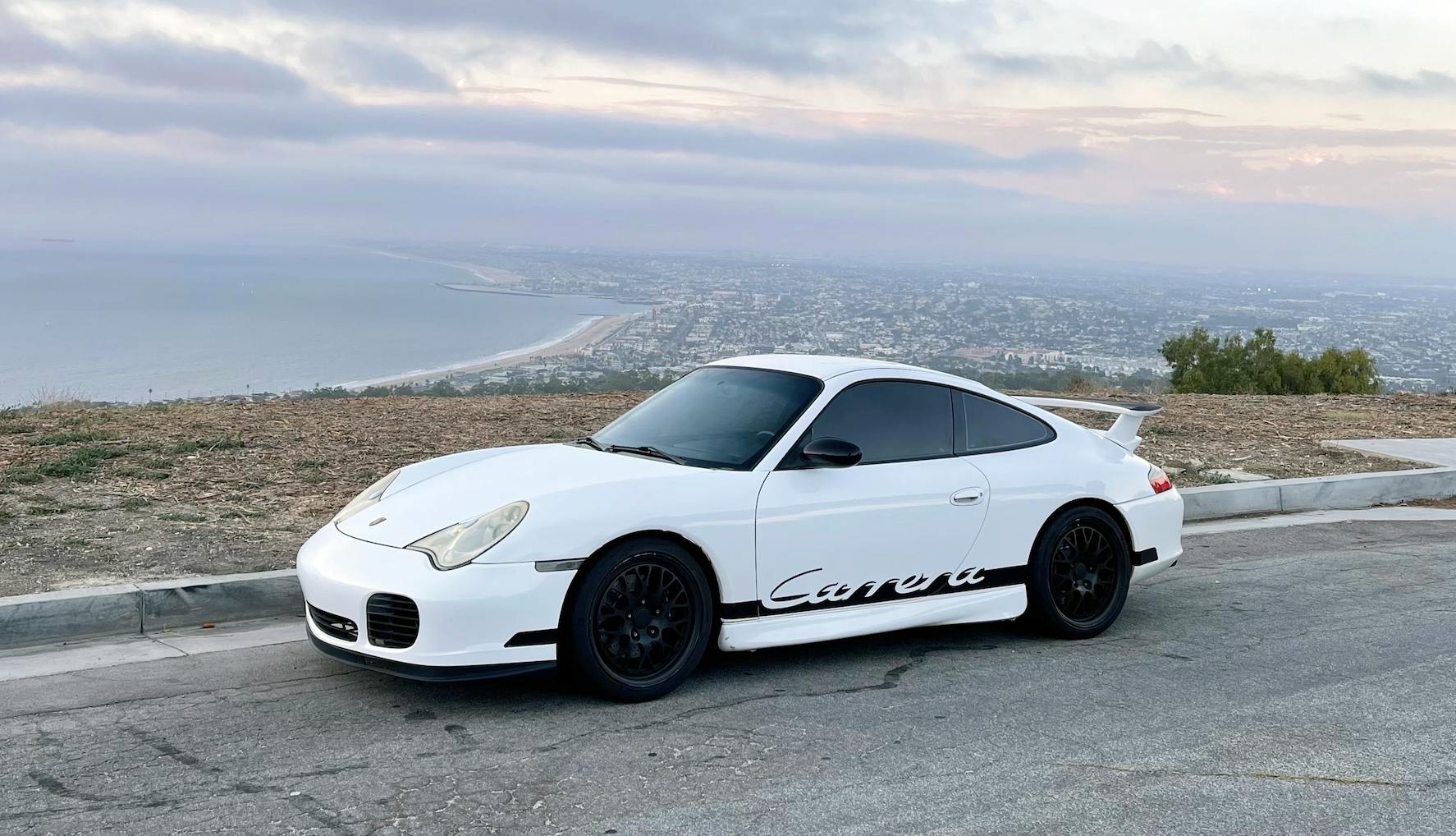
This all seems Sooo complicated-I’m in Canada where winter lasts 7 months- My garage has a brick floor & mice get in – & I get all kinds of Different advice on how to best store the cars-
The best answer for mice is to invest in a cat and give it a raised heated bed space and feed it in the garage
Back when I had one classic car I was able to enjoy it for most of the summer, being I live in Michigan November thru about the middle of April are a no drive zone. So I do the best I can, I would put anywhere between 3000-4000 miles on it in a summer… But then about 10 years later there was a second summer car, I then had to split my time between the two, and each got driven 1500-2000 miles each, then I got a THIRD classic, and I drove each 1000-1300 miles each. Now I have too many and I am really happy to put a tank of gas through each one, change the fluids and go from there. I have started taking longer trips to car shows, which helps with running fuel through them, and keeping them lubricated. Fortunately I have a large garage (insulated pole barn with a concrete floor and vapor barrier), where I can store them and I forbid my family from eating or throwing any food away to keep the mice out. Fortunately I have less mice in my barn than I do my house, where 3 cats reside. With that said I have had very few problems with my vehicles, amazingly even after driving them so few miles.
Hmmm. A friend with a 2002 996 approached me last week and says it’s for sale. He’s 80. It’s been sitting a long while.
One would think that southern California would be a great place to drive a classic car as a daily driver. This article points out, not so much. I’ll stick with NE Ohio where it’s best to only drive your classic from late April through early November at best, but at least we can drive them as they were intended.
I’m having a bit of a hard time seeing a 2002 996 as anything but a used car, but then I’m not a Porsche person. Also, I’m not surprised that a well maintained car was still G2G after that short a time sitting, especially in that climate.
When I bought my 74 450SL late in 2020, it had 45k miles on it or about 900 miles per year average. It ran fairly well. At that rate, it sat more than it was driven. In 2021, I spent almost $4k in repairs due to it not being driven. The cost of parts wasn’t too bad, but the labor….. It needed a water pump, radiator boiled out, complete tuneup (cap, points, plugs, wires, rotor looked almost original), all flexible hoses, trans fluid replaced, etc. Oh, yeah. It also needed tires (20 yrs old) and top. I have put about 3k miles on it since I bought it and would drive it more if this wasn’t SE WI. However, it is stored properly in my dry garage from Nov to April And comes out after the 2nd good April shower has cleaned the salt off the roads. BTW–after the $4k in repairs, it runs like a Mercedes should.
Wonderful article! I’ve found that taking your heart throb out for a 20-40 miles spin once every 7-10 days will keep all mechanical and electrical components in immaculate condition.
And puts a goofy grin on your face.
My 1942 Ford truck is rusting faster than I can fix it.
I’ve had the same battery access problem on a 996 GT3 the first day I bought the car. Fortunately the shop I bought it from came right out with a new battery and installed it on the spot. However, the electronic hood opener has to be one of the dumbest things I’ve ever seen by Porsche. Certainly not expensive like the IMS, but really stupid.
996: NEVER again. Porsche should be sued by the thousands of owners who dealt with blown engines and IMF bearings. My engine blew up leading to a full rebuild. I moved to Mustang many years later – a ‘classic’ GT 2013 low mileage, one owner car and it is pure joy. It is no Porsche – and I love it all the more for it.
LA as a reason not to drive? PUH-LEEEEEZE!
NYC. Now THERE is a reason not to drive.
Thanks for this cautionary tale. I have a 2021 Cayman GTS and daily drive it, but that’s about to change with the introduction of a Subaru. I cannot see me leaving the car for long periods, but still, as you pointed out, us humans do silly things.
Next time when storing a 996 Porsche leave the frunk. unlatched
Well, it really didn’t sit for very long. I would have been shocked if it had major problems. I have a 2000 996
Raby’s constant and obsessive statements about the IMS issues in 996 Porsches scared me into selling my own ’99 996 when I started drinking bourbon to facilitate sleeping.
80 Mazda RX7 – 15 years outdoor (soft-covered) winters storage in Interior Alaska (so, 7 months)
√- full tank of gas, run with full bottle of SeaFoam, fuel pump shut off to let carb run dry, stall out motor-
√- seal intake with plastic baggie (cut of exterior moisture inlet)
√ -seal off exhaust tips (as above)
√- park over plastic ground sheet! (whether on concrete OR soil). No humidity/rust drama…
√- tires to 45 PSI – no flat spots
√ – 50ccs engine oil down the carby mouth, dry -rotate (no spark) the engine to mix it around
√ – Optima Red battery, pulled and trickle charged indoors. Still strong after 12 yrs (used up 2 in 20yrs)
√ – mothballs around engine area
√ – moisture desiccant bags inside (crack a window if you live in humid area!!!! Found THAT out the hard way…) (I use the ones Griotts sells)
Started up every spring! Still going strong (tho life a bit easier now with us in N.AZ)
Stu
Ex Alaska, now N.AZ